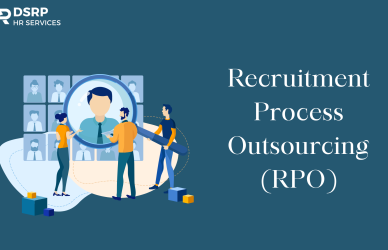In recent years, the concept of “moonlighting” has gained attention in the world of work. With the rise of the gig economy, remote work, and flexible job structures, more employees are taking on additional jobs outside their regular employment. Moonlighting refers to working a second job or side gig, usually in the evenings or weekends, in addition to one’s full-time job. While moonlighting offers many benefits to workers, it can raise concerns for employers regarding productivity, commitment, and potential conflicts of interest.
In this blog, we will explore the concept of moonlighting, its pros and cons, the legal considerations, and how companies can manage it effectively.
What is Moonlighting?
Moonlighting is when an employee takes on a second job outside their primary employment, often during hours that do not interfere with their main job. It can include freelance work, part-time roles, or entrepreneurial ventures. Moonlighting has become increasingly common due to the following factors:
– Rise of the Gig Economy: Platforms like Uber, Airbnb, and freelance websites have made it easier for people to earn extra income by working on the side.
– Flexible Work Schedules: Remote and hybrid work arrangements allow employees to manage their time better, giving them the opportunity to pursue additional jobs.
– Financial Necessity: Rising living costs and inflation often push employees to seek supplemental income streams.
– Passion Projects: Many individuals use moonlighting as an opportunity to explore their passions, start a small business, or gain new skills outside their day job.
Different Types of Moonlighting
1. Freelancing: An employee may offer services like writing, graphic design, consulting, or IT support as a freelancer.
2. Part-Time Jobs: This could be working at a retail store, teaching, or driving for ride-sharing services during non-working hours.
3. Entrepreneurship: Some employees use their free time to start their own business, such as selling products online or opening a small café.
4. Gig Work: This could involve taking up short-term gigs like delivering food, renting out a property, or doing odd jobs.
Pros and Cons of Moonlighting
For Employees:
Pros
1. Extra Income: The most obvious benefit is financial. A second job helps employees meet their financial goals, pay off debts, or save for future expenses.
2. Skill Development: Working a different job can provide new skills that may be beneficial in one’s main career. For instance, freelancing in design could improve creativity for a marketing professional.
3. Career Exploration: Moonlighting allows people to test new career paths without leaving their main job. If the side job becomes more rewarding, it can even turn into a full-time career.
4. Personal Fulfilment: Pursuing passion projects outside of work can enhance personal satisfaction, reducing stress or burnout from the main job.
Cons
1. Work-Life Balance: Managing two jobs can be stressful, leaving little time for rest, family, or hobbies.
2. Burnout: Constantly juggling two roles may lead to fatigue, which can affect performance in both jobs.
3. Legal and Contractual Issues: Some employers have policies against moonlighting, especially if the second job is seen as a conflict of interest or compromises the employee’s commitment to the primary role.
4. Reduced Focus on Main Job: If the side job requires too much time and attention, it can affect the employee’s productivity and focus at their main workplace.
For Employers:
Pros
1. Broadened Skill Sets: Employees who moonlight may bring new skills or perspectives to their primary job, which could enhance creativity or problem-solving.
2. Employee Satisfaction: Allowing moonlighting can improve employee retention if workers feel they have the freedom to pursue additional opportunities without quitting their main job.
Cons
1. Conflict of Interest: There is always the risk that the side job could be in competition with the employer or lead to conflicts of interest.
2. Decreased Productivity: Fatigue or divided focus can result in lower productivity and commitment to the main job.
3. Legal Risks: If an employee uses company resources or intellectual property for their second job, it could lead to legal complications.
Legal Considerations of Moonlighting
1. Non-Compete Agreements
Some companies require employees to sign non-compete agreements, which prevent them from working for competitors or starting a business in the same field while employed. If an employee’s side job violates this agreement, legal action may be taken.
2. Confidentiality and Intellectual Property
Employees with access to sensitive information or proprietary technology may face restrictions on sharing this knowledge with a second employer. Misusing company resources or information for a side gig can lead to legal penalties.
3. Working Hours and Fatigue
In industries where employee fatigue could be a safety issue, such as healthcare or transportation, moonlighting may be discouraged to ensure employees are well-rested for their main job. Employers have the right to monitor performance and ensure that moonlighting does not affect safety or productivity.
How Employers Can Manage Moonlighting
1. Create a Clear Moonlighting Policy: Employers should have a clear policy that outlines acceptable and unacceptable forms of moonlighting. This should include guidelines on conflicts of interest, use of company resources, and any limitations on working hours.
2. Encourage Transparency: Open communication is key. Encourage employees to disclose side jobs so that the company can address any potential issues proactively.
3. Assess Each Case Individually: Rather than having a blanket ban on moonlighting, assess each situation on a case-by-case basis. Consider the nature of the side job, its potential impact on the employee’s performance, and any conflicts of interest.
4. Support Work-Life Balance: Employers can promote work-life balance by offering flexible work arrangements and wellness programs to reduce the need for moonlighting in the first place.
Conclusion
Moonlighting is becoming a more common reality in today’s workforce, with employees seeking additional income, exploring new careers, or pursuing personal passions. While it presents unique challenges for employers, it can be managed with clear policies and open communication. By understanding the motivations behind moonlighting and addressing the legal and performance risks, companies can maintain a productive and satisfied workforce.






Hello there, just became aware oof your blog throough Google, and found thhat it is truly informative.
I’m gonna watch out for brussels. I will be grateful if you
continue this in future. A lot of people will be benefited from your writing.
Cheers! http://boyarka-Inform.com/